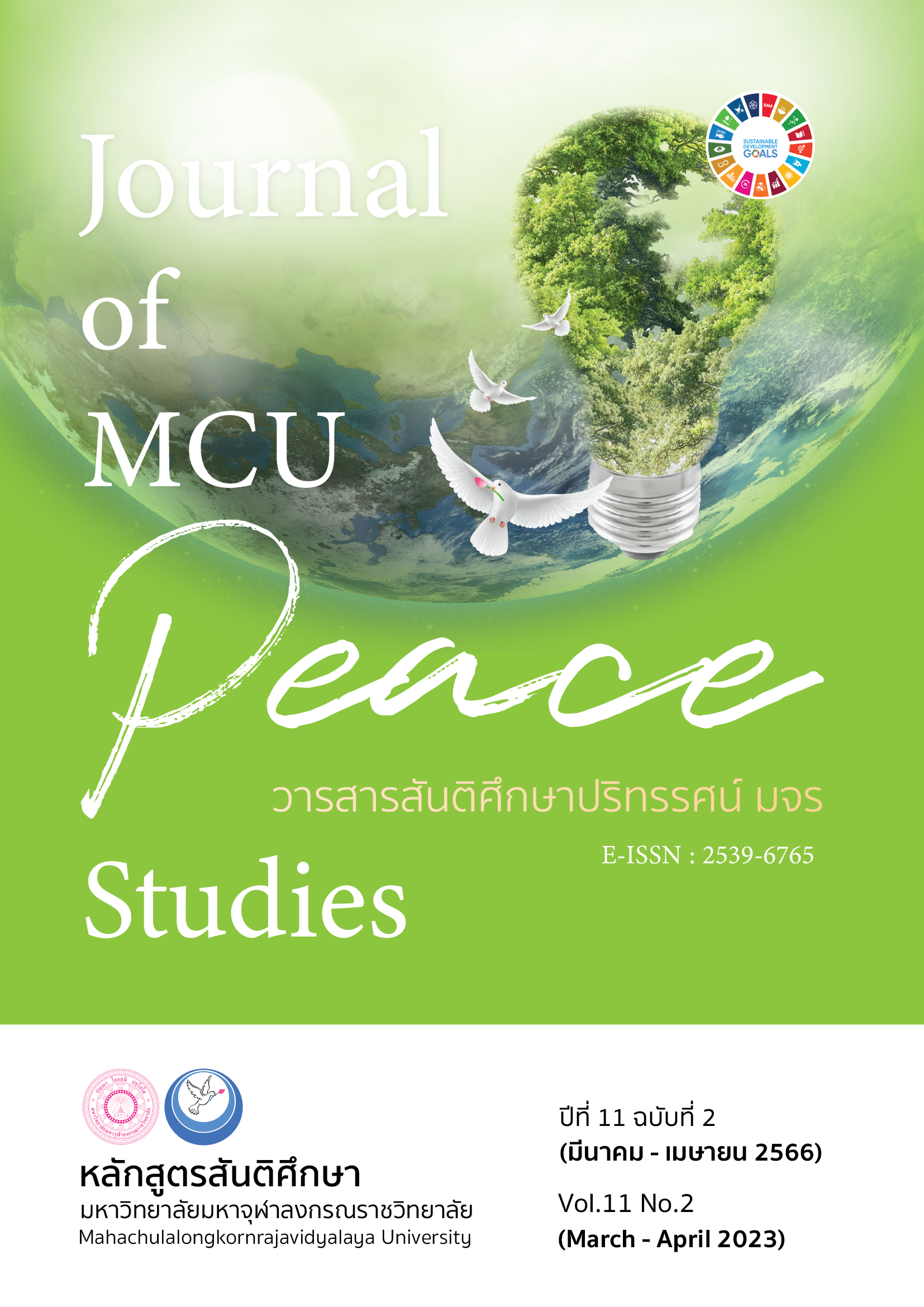พลัง “บวร” กับการมีส่วนร่วมพัฒนาวัดเป็นแหล่งท่องเที่ยว
Main Article Content
บทคัดย่อ
บทความนี้มุ่งนำเสนอให้เห็นถึงความสำคัญของพลัง “บวร” ในการพัฒนาวัดให้เป็นแหล่งท่องเที่ยว เนื่องจากการพัฒนาวัดไม่ควรปล่อยให้เป็นภาระของเจ้าอาวาสหรือพระภิกษุสงฆ์ภายในวัดอย่างเดียวเท่านั้น หากแต่ทุกภาคส่วนไม่ว่าจะเป็นวัดเอง ชุมชน หรือภาคีหน่วยงานที่เกี่ยวข้องก็ควรเข้ามามีส่วนร่วมในการพัฒนาเป็นการดำเนินการในลักษณะ 3 ประสาน คือ “บวร” ซึ่งประกอบด้วย “บ” บ้าน (ชุมชน) “ว” วัด และ “ร” หน่วยงานภาครัฐ มาเป็นกลไกและแกนกลางในการขับเคลื่อนดำเนินกิจกรรมต่างๆ ตั้งแต่กระบวนการตัดสินใจ ร่วมดำเนินงาน ร่วมรับผลประโยชน์ และร่วมประเมินผล ซึ่งจะสามารถทำให้การดำเนินการบรรลุวัตถุประสงค์ได้อย่างมีประสิทธิภาพ ทั้งนี้การมีส่วนร่วมของพลัง “บวร” ควรดำเนินการบนพื้นฐานของหลักธรรมทางพระพุทธศาสนา คืออปริหานิยธรรม ซึ่งเป็นหลักธรรมที่ทำให้เกิดความเจริญทั้งส่วนตนและส่วนรวม และยังสอนให้รู้จักหลักการทำงานร่วมกันอย่างมีประสิทธิภาพ มาเพื่อใช้ในการบริหารจัดการ อย่างมีส่วนร่วมเพื่อลดปัญหาความขัดแย้งในการดำเนินงานและเพื่อให้การพัฒนาเป็นไปอย่างยั่งยืน และเมื่อวัดเป็นแหล่งท่องเที่ยวก็จะเป็นแหล่งเศรษฐกิจสร้างรายได้ให้กับทั้งวัดเองและชุมชน
Article Details

อนุญาตภายใต้เงื่อนไข Creative Commons Attribution-NonCommercial-NoDerivatives 4.0 International License.
ทัศนะและความคิดเห็นที่ปรากฏในบทความในวารสาร ถือเป็นความรับผิดชอบของผู้เขียนบทความนั้น และไม่ถือเป็นทัศนะและความรับผิดชอบของกองบรรณาธิการ ยินยอมว่าบทความเป็นลิขสิทธิ์ของวารสาร
เอกสารอ้างอิง
Autthawuttikul, S., Sungrugsa, N., & Lakananulak, S. (2017). The Model Development of Religious Tourism Management of Ratchaburi Province. Veridian E-Journal, Silpakorn University, 10(2), 2392-2492.
Bank of Thailand. (2022). Working Conditions of the Population Classified by Business Type. Retrieved June 16, 2022, https://www.bot.or.th/App/BTWS_STAT/statistics/ReportPage.aspx?reportID=638&language=th
Bhrammapanyo, N. et al. (2013). Management Guidline for Religious Tourism Toward Theasean Community: Ubonratchathani Province. Journal of Thai Hospitality & Tourism, 8(2), 36-47.
Cohen, J. M., & Uphoff, N. T. (1981). Rural Development Participation: Concept and Measure for Project Design Implementation and Evaluation: Rural Development Committee Center for international Studies. New York: Cornell University Press.
Juljarern, S. (2019). Community Development Department. Applying BOWON Principle (Village, Temple. Government Agency) to Drive Community Development to Create a Happy Society. Retrieved June 16, 2022, from, https://www.cdd.go.th/content/621207
Mahachulalongkornrajavidyalaya University. (1996). Thai Tripitakas. Bangkok: MCU Press.
Moral and Ethical Development Office Working Group. (2014). Guidelines for the Project to Promote Tourism on the Pilgrimage Route in Religious Dimensions B.E. 2557. Bangkok: Department of Religious Affairs, Ministry of Culture.
Oxford University. (1993). The Oxford English Dictionary, London: Oxford University Press.
Phra Sutheeweerapandit, Phrabaidika Sanya Abhivanno, & Jirawatanakit, P. (2016). Strategies for Buddhist of Thai Cultural and ASIAN Tourism. Journal of MCU Buddhapanya Review, 1(3), 7-24.
Phrakru Kittiwaranuwat, Phra Chatchai Athipanyo & Phra Udom Sitthinayok. (2018). The Roles of Sangha in Continuing the Thai Cultures. Journal of MCU Nakhondhat, 5(3), 470-471.
Phramaha Serichon Narissaro (Phanprakhon), Panyachit, S., & Wanitchanon, P. (2013). Buddhist Tourism Management in Thailand. (Research Report). Buddhist Research Institute: Mahachulalongkornrajavidyalaya University.
Phramaha Suthit Aphakaro (Oboun) et al. (2013). The Model and Process of Buddhism-Based Tourism Development in Thailand. (Research Report). Bangkok: National Research Council of Thailand (NRCT) and The Thailand Research Fund (TRF).
Phumathon, M., Duangloy, D., & Phra Raphin Buddhisaro. (2016). A Concept of Buddhist Tourism Management: Principle and Practices. Journal of MCU Huminities Review, 2(2), 50-64.
Suprapa, S. (2017). Trends and Tourism marketing 4.0 in Thailand. Veridian E-Journal, Silpakorn University, 10(3), 2055-2068.
William, E. (1976). Electoral Participation in a Low Stimulus Election. Rural Development, 4(1), 111–124.


